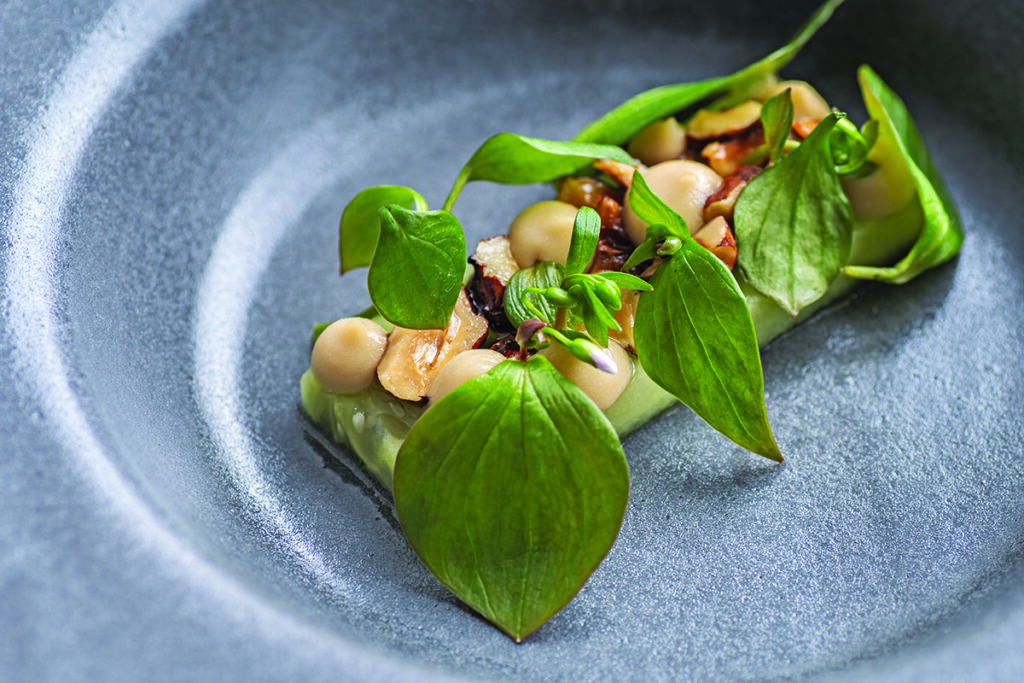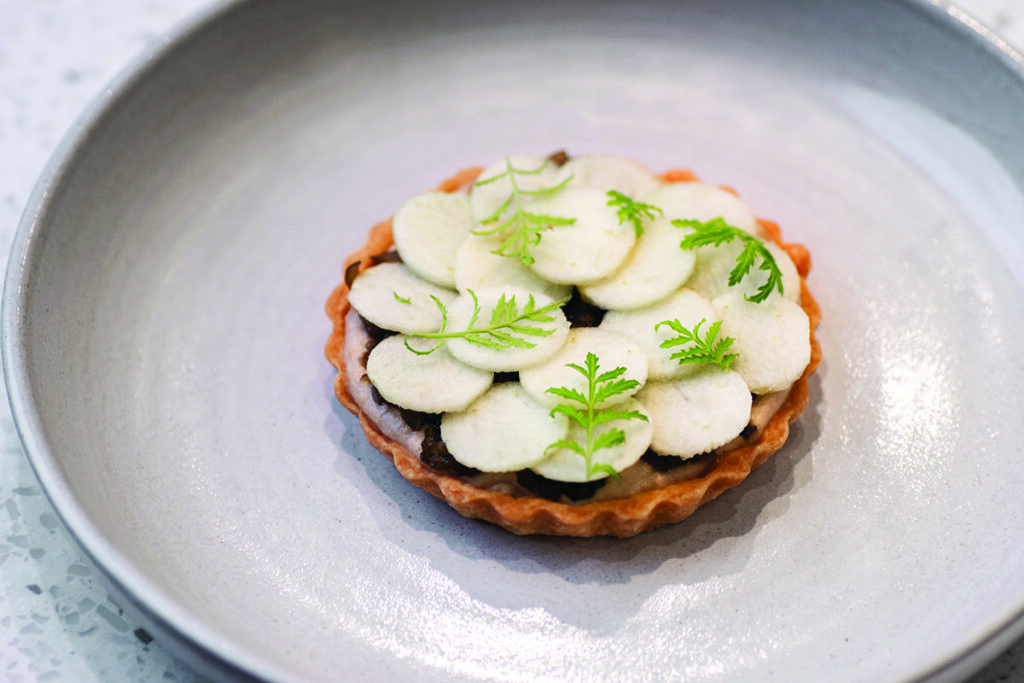
By Julian Bentivegna, Ten Restaurant
Plant-focused diets have emerged over the last couple of years as a noticeable food movement. Some might say that this is just another trend that will soon fade away. However, I believe that this shift in our eating habits is part of the blueprint to the future of dining, and a behaviour that will be instrumental in combating climate change. The current farming practices for meat production place a significant strain on resources and the environment when compared to growing fruits and vegetables. Ontario grows some of the best produce in the world, so why not start making plant-based dishes the star of a couple of meals a week?
As the vegetable-forward movement continued to gain traction, last year in Toronto, I opened Ten Restaurant, a 10-seat dining establishment with a multi-course and vegetable-focussed tasting menu. I want to clarify that I am not a vegetarian, nor does my restaurant serve only vegetables and fruit. I personally enjoy eating meat, and our restaurant typically offers one or two courses centred around a protein from small farms here in Ontario. I am, however, a firm believer of “everything in moderation,” and enjoy the challenge of cooking vegetables. At Ten, I try to showcase the hidden value that plant-based food can provide to our guests. I hope this article will shed some light on how you can create amazing meatless meals that are balanced with flavour and texture.

Vegetables are not Meat
The first and biggest mistake when approaching vegetables is the effort to try and substitute them for meat. Examples of this include cauliflower and beet steaks, vegetable sushi, or those unfortunate Portobello mushroom burgers. Well grown vegetables and fruit have enough integrity to hold their own in a dish without having to masquerade as something they are not. A carrot dish should taste like a carrot, and everything you accompany it with should either highlight or contrast the characteristics of that carrot (sweet, savoury and earthy) with something it doesn’t have (salt, acid, fat, heat). Anytime you include meat, the protein on the plate will inevitably overshadow everything that accompanies it. By comparison, vegetables need balance to help them shine.

Texture
Stop overcooking vegetables! The amount of texture present in raw forms of vegetables should be celebrated instead of shunned. When deciding to work with a vegetable, ask yourself, “How am I going to cook this?” The answer shapes the eventual meal. Every plant, if not edible raw, has a point where it becomes edible/palatable through cooking — and the goal should be to isolate that moment. Scientists are starting to discover what chefs have known for quite some time: the more densely nutritious a vegetable is, the better it tastes. Cooking — or more specifically, overcooking — extracts some of the nutrients from vegetables, which makes them less healthy and less tasty. The worst culprit is boiling or blanching, since by the end of cooking, the water now has most of the good stuff from the plant, and if you get rid of it, there goes all the flavour. At Ten, unless we can repurpose the cooking liquid, we tend to steer away from these preparation methods. The reward for maintaining as much natural texture as possible is that you no longer need to add anything unnecessary to improve the texture later on. A good rule of thumb is that unless you are going to be making a puree out of what you are cooking, it should still have a bite to it.

Less Is More
The versatility of plants can’t be overstated. They can be roasted, braised, stewed, fried, poached…the list goes on and on. This versatility is a gift, but also a curse, as you can get bogged down by the hundreds of ways you could cook and serve them. I’ve always found that concentrating on a singular vegetable, and building around it, often results in the best meal. Less is definitely more when it comes to cooking plants. This philosophy shapes everything we do at Ten Restaurant and is crucial in refining and perfecting our plant-based meals. After coming up with an idea for a course at the restaurant, we look closely at all the individual components and ask ourselves several questions. Is this needed? Is this texture found anywhere else on the plate? Can I remove this? Is it too complicated? Does the main vegetable still shine through? By asking these questions, we can refine the dish to reach the point where everything on the plate has a purpose that uplifts the other components.
To create truly delicious plant-based dinners, you must learn how to balance flavours, textures, and colours while not overly complicating the final product. Try to prepare items that are in season together, that have contrasting but complementing flavour profiles, and always aim to do as little as possible to the vegetable. Never overcook vegetables, and always remember how valuable their texture can be in a meal. Most importantly, start treating them with as much respect as you hold for meat, without trying to imitate the qualities of meat. In the end, it’s not about cutting out meat altogether, but rather reducing the amount on your plate and bringing vegetables to the forefront. Proper cooking of vegetables is challenging, but with the right mindset, you can enjoy delicious, simple meals that are not only good for you, but that also help reduce your carbon footprint and your grocery bill.
Julian Bentivegna is the owner of Ten, a fine dining restaurant that offers guests innovative and exciting tasting menu experiences, while also giving back to the community that struggles with food insecurity. Julian’s commitment to continuous learning drives everything Ten does. www.10restaurant.ca
